Filter by
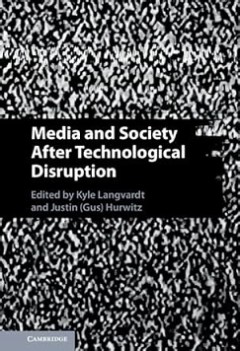
Media and society after technological disruption
This interdisciplinary collection studies the Internet's effects on traditional media. Part 1 deals with the breakdown of trust in the media; Part 2 outlines the changing law of defamation and privacy; Part 3 analyzes the challenge of online content moderation; and Part 4 considers the financial challenges facing journalistic enterprises
- Edition
- -
- ISBN/ISSN
- 9781009174411
- Collation
- xiii, 293 pages
- Series Title
- -
- Call Number
- 302.23 LAN m
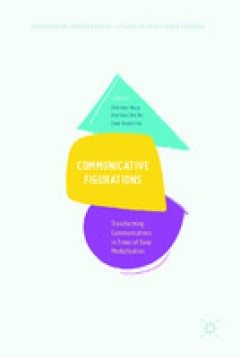
Communicative figurations: transforming communications in times of deep media…
media communication; culture and society; media transformations; technical communication; media social relations and roles; social fields and institutional dynamics; identities and collectives; public debate; political decision-making; media logic; mediatization
- Edition
- -
- ISBN/ISSN
- 9783319655840
- Collation
- -
- Series Title
- Transforming Communications – Studies in Cross-Media Research,
- Call Number
- 302.2 HEP c

Children, media, and pandemic parenting: family life in uncertain times
This book examines changes in families’ rules and routines connected with media during the pandemic and shifts in parents’ understanding of children’s media use. Drawing on interviews with 130 parents at the height of the COVID-19 pandemic, the book explores specific cultural contexts across seven countries: Australia, Canada, China, Colombia, South Korea, United Kingdom, and United St…
- Edition
- -
- ISBN/ISSN
- 9781003458074
- Collation
- x, 196 pages; illustration
- Series Title
- Routledge studies in new media and cyberculture
- Call Number
- 302.23083 WIL c

Making sense of politics, media and law: rhetorical performance as invention,…
From Trump’s ‘make America great again’ to Johnson’s ‘build back better’, performative politicians use The Making Sense to persuade their public audiences. Law ‘makers’ do it too: A courtroom trial is a ‘truth factory’ in which facts are not found but forged. The ‘court of popular opinion’ is another such factory, though its processes are often flawed and its product…
- Edition
- -
- ISBN/ISSN
- 9781009336413
- Collation
- xii, 284 pages; illustration
- Series Title
- Law in context
- Call Number
- 340.115 WAT m
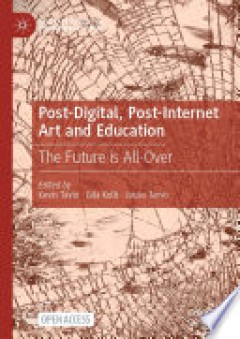
Post-digital, post-internet art and education : the future is all-over
This open access edited volume provides theoretical, practical, and historical perspectives on art and education in a post-digital, post-internet era. Recently, these terms have been attached to artworks, artists, exhibitions, and educational practices that deal with the relationships between online and offline, digital and physical, and material and immaterial. By taking the current socio-tech…
- Edition
- 13
- ISBN/ISSN
- 9783030737702
- Collation
- 300 p
- Series Title
- Palgrave Studies in Educational Futures,
- Call Number
- 707 KEV p
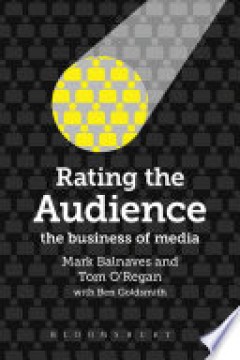
Rating the audience : the business of media
This book is available as open access through the Bloomsbury Open Access programme and is available on www.bloomsburycollections.com. Knowing, measuring and understanding media audiences have become a multi-billion dollar business. But the convention that underpins that business, audience ratings, is in crisis. Rating the Audience is the first book to show why and how audience ratings research …
- Edition
- -
- ISBN/ISSN
- 9781849663410
- Collation
- xvi + 272 p
- Series Title
- -
- Call Number
- 302.23 MAR r
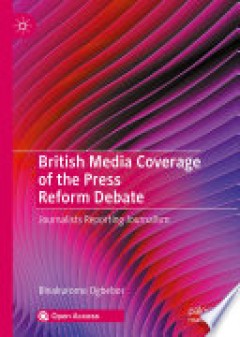
British media coverage of the press reform debate : journalists reporting jou…
This open access book provides a detailed exploration of the British media coverage of the press reform debate that arose from the News of the World phone hacking scandal and the Leveson Inquiry. Gathering data from a content analysis of 870 news articles, Ogbebor shows how journalists cover debates on media policy and illustrates the impact of their coverage on democracy. Through this analysis…
- Edition
- 1
- ISBN/ISSN
- 9783030372651
- Collation
- XI, 227p. ; ill.
- Series Title
- -
- Call Number
- 072 OGB b
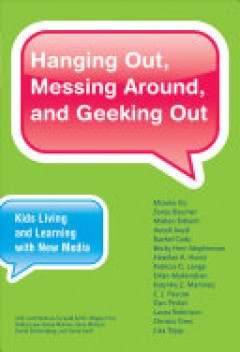
Hanging out, messing around, and geeking out : kids living and learning with …
An examination of young people's everyday new media practices—including video-game playing, text-messaging, digital media production, and social media use.Conventional wisdom about young people's use of digital technology often equates generational identity with technology identity: today's teens seem constantly plugged in to video games, social networking sites, and text messaging. Yet there…
- Edition
- -
- ISBN/ISSN
- 9780262518543
- Collation
- 440 hlm
- Series Title
- -
- Call Number
- 302.23108350973

Cyber Public Sphere and Social Movements : Calling to Cyber Spaces
The diversification and politicisation of the mass media within itself and also societal pressure created by the mass media at a social level have caused changes to our social structure. The first change began with the contextual changes to the mass media, and this change led to visible changes in societies. That transformation has almost erased the distinction between the private and the publi…
- Edition
- 1
- ISBN/ISSN
- 9783845291260
- Collation
- 132p
- Series Title
- -
- Call Number
- 303.484 COT

Social media in Southeast Italy : crafting ideals
Why is social media in southeast Italy so predictable when it is used by such a range of different people? This book describes the impact of social media on the population of a town in the southern region of Puglia, Italy. Razvan Nicolescu spent 15 months living among the town’s residents, exploring what it means to be an individual on social media. Why do people from this region conform on p…
- Edition
- 1
- ISBN/ISSN
- 9781910634721
- Collation
- 224p
- Series Title
- Why We Post
- Call Number
- 302.231 NIC
 Computer Science, Information & General Works
Computer Science, Information & General Works  Philosophy & Psychology
Philosophy & Psychology  Religion
Religion  Social Sciences
Social Sciences  Language
Language  Pure Science
Pure Science  Applied Sciences
Applied Sciences  Art & Recreation
Art & Recreation  Literature
Literature  History & Geography
History & Geography